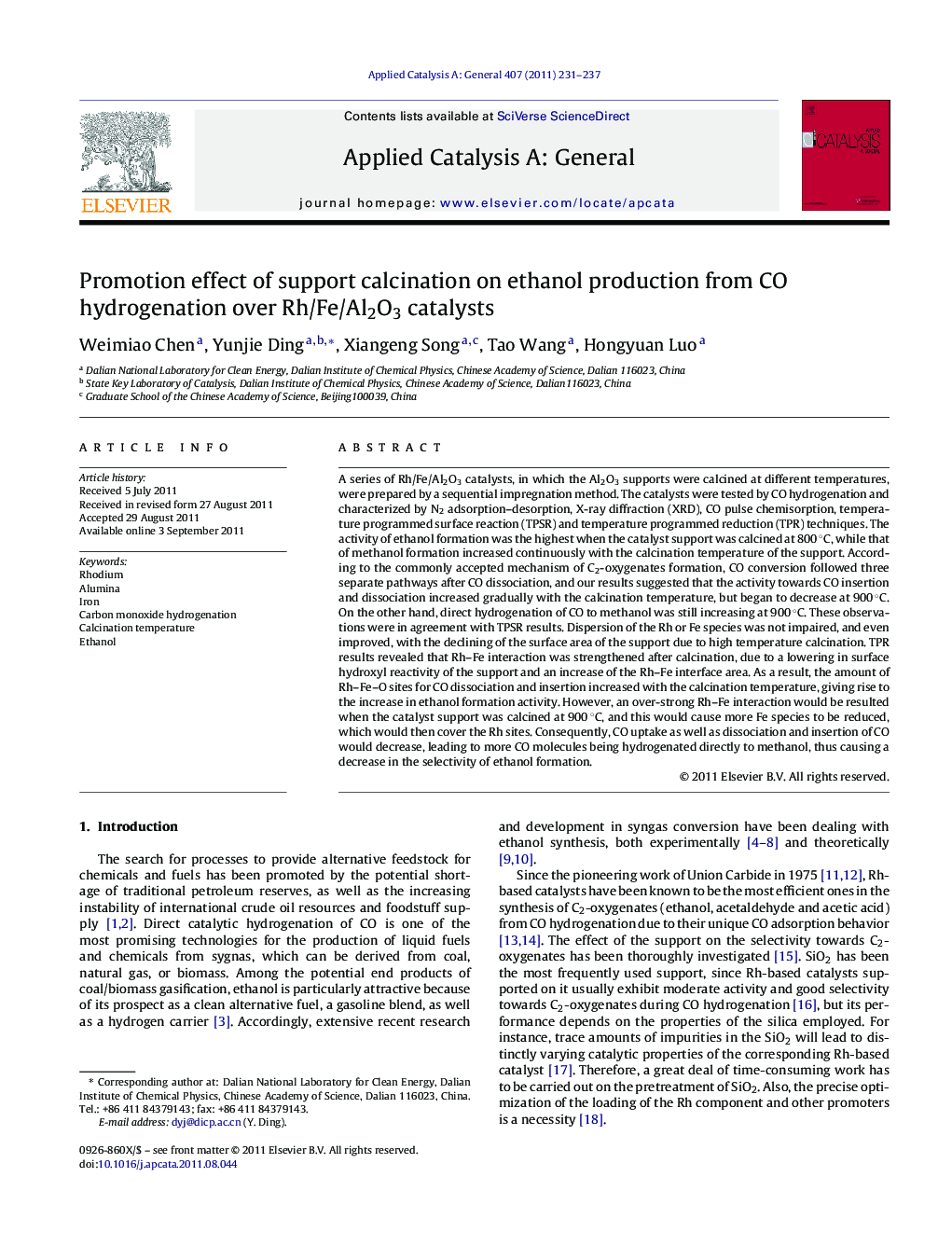| کد مقاله | کد نشریه | سال انتشار | مقاله انگلیسی | نسخه تمام متن |
|---|---|---|---|---|
| 41314 | 45884 | 2011 | 7 صفحه PDF | دانلود رایگان |

A series of Rh/Fe/Al2O3 catalysts, in which the Al2O3 supports were calcined at different temperatures, were prepared by a sequential impregnation method. The catalysts were tested by CO hydrogenation and characterized by N2 adsorption–desorption, X-ray diffraction (XRD), CO pulse chemisorption, temperature programmed surface reaction (TPSR) and temperature programmed reduction (TPR) techniques. The activity of ethanol formation was the highest when the catalyst support was calcined at 800 °C, while that of methanol formation increased continuously with the calcination temperature of the support. According to the commonly accepted mechanism of C2-oxygenates formation, CO conversion followed three separate pathways after CO dissociation, and our results suggested that the activity towards CO insertion and dissociation increased gradually with the calcination temperature, but began to decrease at 900 °C. On the other hand, direct hydrogenation of CO to methanol was still increasing at 900 °C. These observations were in agreement with TPSR results. Dispersion of the Rh or Fe species was not impaired, and even improved, with the declining of the surface area of the support due to high temperature calcination. TPR results revealed that Rh–Fe interaction was strengthened after calcination, due to a lowering in surface hydroxyl reactivity of the support and an increase of the Rh–Fe interface area. As a result, the amount of Rh–Fe–O sites for CO dissociation and insertion increased with the calcination temperature, giving rise to the increase in ethanol formation activity. However, an over-strong Rh–Fe interaction would be resulted when the catalyst support was calcined at 900 °C, and this would cause more Fe species to be reduced, which would then cover the Rh sites. Consequently, CO uptake as well as dissociation and insertion of CO would decrease, leading to more CO molecules being hydrogenated directly to methanol, thus causing a decrease in the selectivity of ethanol formation.
.Figure optionsDownload high-quality image (82 K)Download as PowerPoint slideHighlights
► Effect of Al2O3 calcination on ethanol production from syngas over Rh/Fe/Al2O3.
► CO conversion value was first delved into four pathways.
► CO desorption behaviors of Rh-based catalysts during CO-TPSR experiment.
Journal: Applied Catalysis A: General - Volume 407, Issues 1–2, 4 November 2011, Pages 231–237